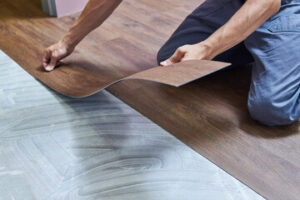When it comes to flooring few decisions are more important than picking the right one for your home. It determines how the room will look and function over time, as well as how much it will cost to maintain.
A wide variety of materials is available, from classic hardwood to eco-friendly laminate. It’s important to know the pros and cons of each, so you can make a smart choice.
Hardwood is an excellent choice for a floor because it offers a number of benefits. It can increase the value of your home, is easy to clean and maintain, and can last for decades.
One of the best parts about hardwood is that it is available in a wide variety of species, colors and styles. Some of the most popular hardwoods include oak, maple, hickory and walnut.
Another option for wood flooring is douglas fir. This is a good choice for those who like a rustic look, since all the planks of douglas fir are uniform in appearance.
This type of flooring is also very durable, and can withstand plenty of traffic. Some of the downsides to this kind of flooring are that it can be difficult to keep clean, and its appearance may fade over time.
However, it is worth noting that this type of flooring can be easily refinished by a professional. It also does not breed the kinds of allergens that carpet does, making it an ideal flooring choice for those with allergies.
Lastly, hardwood is a more environmentally friendly choice because of improved timber harvesting methods and strong rules in place for tree cutters. It is important to ensure that the trees you use for your floor are certified by either PEFC or FSC to be sustainable.
When choosing wood for your floor, you should also consider where you will install it and how much wear it will receive. It is not recommended to put wood floors in areas that receive a lot of moisture or humidity. You should also think about the sturdiness of your subfloor, as hardwood can be damaged by leaks or dents in the subfloor.
Carpet flooring is a popular flooring option that’s easy to install and comes in hundreds of colors, textures and styles. In addition, it’s a soft surface that promotes comfort and relaxation.
Carpets are a floor covering made of pile yarns that are attached to a backing. They’re primarily made from man-made fibers, but they also include natural options like wool and sisal.
There are a variety of carpet types, including machine-woven, tufted and cut pile. These are manufactured by massive looms that weave together ‘bobbins’ of yarn and backing.
Tufted carpets are relatively fast to make: a pre-woven backing has yarns tufted into it. These yarns are pushed through a tufting needle, which then holds them in place with underlying “loopers”.
Twisted-pile and velvet-pile carpets are also tufted, but the twist in the fiber is stronger and more durable. The twists help create texture that hides dirt and wear, while they also stand up to matting and crushing.
Cut-pile and loop-pile carpets are different because they use different ways to create the pile. With cut pile, the individual fibers are cut at varying heights, which makes it less likely for objects to get caught in the carpet’s loops.
On the other hand, loop-pile carpets don’t have any cut pile yarns. This style is softer, more resilient to damage and stains, and more comfortable to walk on.
These types of carpets are available in a range of heights and patterns. They can be used as a neutral foundation, or as a focal point with vibrant colors and bold patterns.
Another advantage of carpet is that it reduces noise in your home. It absorbs sounds from your furniture and family members, making it quieter in your living room or bedroom. However, it also collects dust mites and pet dander, which can be allergens for those with allergies. This can cause respiratory problems and skin irritations, so it’s best to keep carpet areas away from the main living area in your house.
Vinyl flooring is a durable flooring option that can last for up to 20 years. It is a versatile material that is easy to install and maintain.